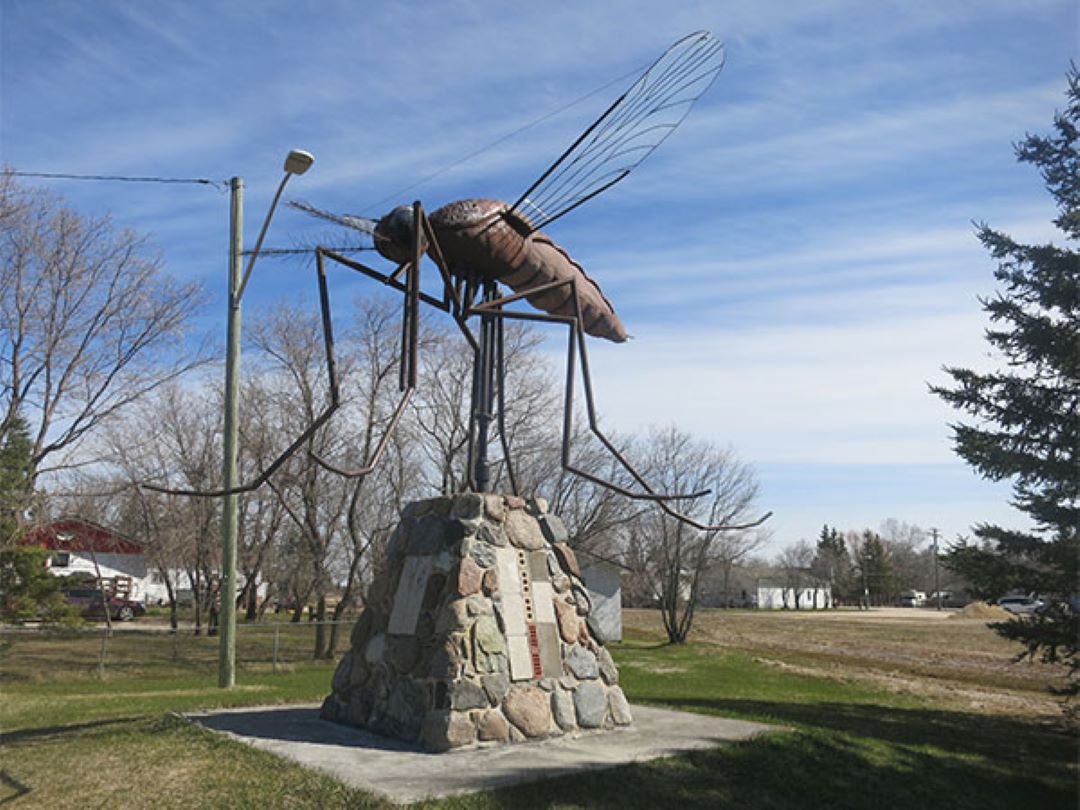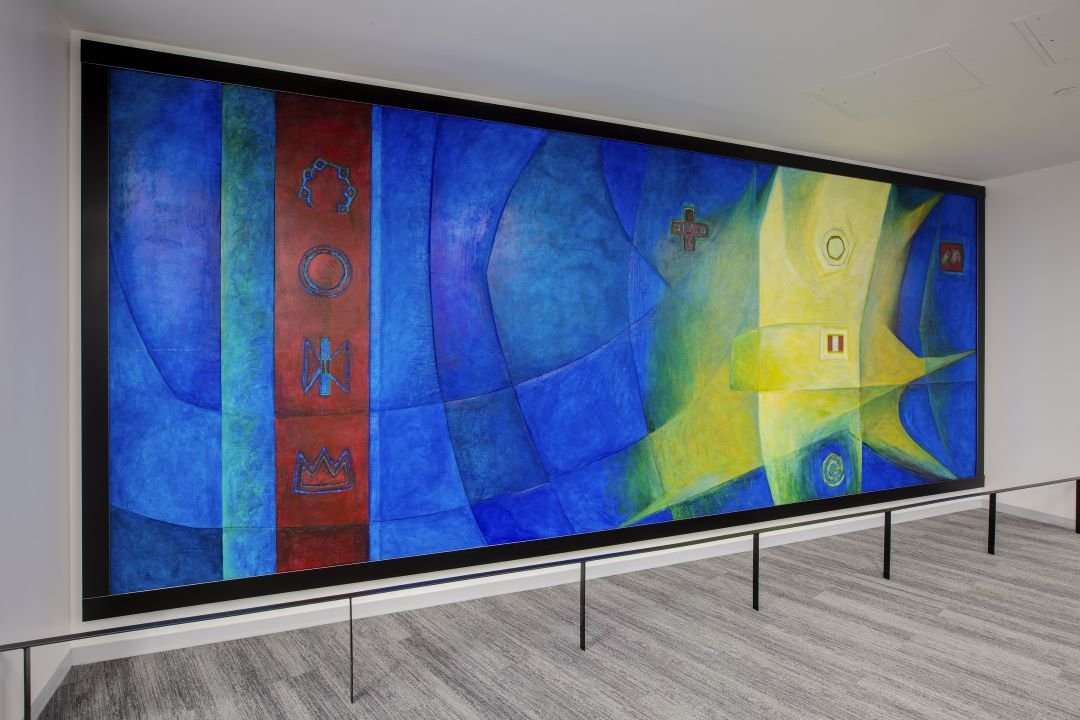Keeping mosquitoes under control begins at home
Komarno, which means “mosquito infested” in Ukrainian, Manitoba photo.
“We know that everyone is itching to get outside and Spring is looking pretty dry at the moment, so we're not anticipating a lot of mosquito activity early in the season. The main driver of mosquitoes in Edmonton typically is rainfall,” said Mike Jenkins, Senior Scientist. “Our team is monitoring and adapting our 2024 mosquito forecast as temperature also plays an increasingly important role.”
The City begin the annual ground control efforts this week, with ditches and areas around Edmonton monitored for development. Last year, increased biological methods to control mosquitoes, such as using copepods as biocontrol methods, were implemented and will continue this year.
Edmontonians can help keep mosquito populations under control. Stagnant pools of water are places where mosquito larvae can develop. To prevent them from becoming nesting ground for biting mosquitoes, you should clear out standing water in yards or eavestroughs, cover rain barrels with lids to prevent mosquitoes from laying eggs and replenish birdbaths, fountains, fishponds and pools so they do not become stagnant.
When mosquitoes do emerge, you can avoid bites by avoiding outdoor activities during dawn and dusk when the insects are most active, covering up with long pants and sleeves, using an effective repellent, and running an oscillating fan when out on your deck as moving air is more effective at discouraging them from coming near you than chemical products like mosquito coils. https://www.edmonton.ca/programs_services/pests/mosquitoes
Brief history of Edmonton from 12,000 BCE to 1904
First Nations peoples and their ancestors have lived in this area since the close of the last glacial period, as early as 12,000 BCE. 200 Indigenous campsites and tool making sites have been found by archaeologists within the region.
The region’s dense forests, open plains, and lakes offered many resources for different Nations to rest and replenish their stores through hunting, gathering and fishing. The abundance of rich resources in the region made it an important place to rest during long voyages between the hills and the prairies, which happened each spring and fall.
The North Saskatchewan River and its tributaries were the main modes of transportation for thousands of years. The river leads all the way to Lake Winnipeg and the Hudson’s Bay region. The voyage from the Edmonton region to Hudson’s Bay has been made many times over, particularly during the fur trade.
By 1795, many trading posts had been established around the present metropolitan area, and by 1801 they had all moved to the current site of Edmonton. Fort Edmonton became the main centre for trade in the area after the 1821 merger of the Hudson’s Bay Company and the North West Company.
Edmonton lies in Treaty 6, which was first signed on August 23, 1876 at Fort Carlton and Fort Pitt in Saskatchewan between the Nehiyawak, Dene Suliné, Nakota Sioux, and the Crown. Today, Treaty 6 encompasses 17 First Nations. Edmonton was incorporated as a town on January 9, 1892 and became the City of Edmonton on October 8, 1904. https://www.ealt.ca/indigenous-connections-blog-list/amiskwaciy-wskahikan-edmonton-history
North Saskatchewan River and YEG not immune to lack of moisture
Karen Hosier photo
Edmonton has a fairly dry climate. Precipitation is heaviest in the late spring, summer, and early autumn. The wettest month is July, while the driest months are February, March, October, and November. The five driest years of Edmonton weather during the past century have all occurred since the year 2000.
Entering 2004, the snow pillow, a device used to measure snowpack, between the North Saskatchewan River and the Athabasca River is far worse than last year. That snow pillow is recording just over 139 millimetres of water equivalent in the snowpack, which is well below average for this time of year and is even below the lowest quartile.
Even more concerning, things would be looking a lot worse in northern Alberta if it wasn't for the impact of another climate catastrophe in the making, according to John Pomeroy, a University of Saskatchewan water scientist. "Parts of northern Alberta were quite fortunate last year because glacier melt helped keep the North Saskatchewan River higher than other rivers in the province.”
The record melting, along with some big rainstorms in early June, impacted the headwaters of the Athabasca as well as the North Saskatchewan, raising water levels in rivers, streams, and other sources of groundwater. But that's not a sustainable solution, Pomeroy said. Some of Alberta's glaciers will be gone in a decade, which means some parts of the province won't have that drought security net.
Snow Goose Festival in Tofield is April 27 & 28.
Gerry Beyersbergen photo
The Snow Goose Festival is a celebration of spring migration through the Beaverhill Lake area. Everyone is welcome from first-time attendees to experienced birders. You will experience a grand wonder of nature as thousands of migrating snow geese, Canada geese, various shorebirds, cranes, and swans return to Beaverhill Lake and area.
There will be a free shuttle to the Festival each day, courtesy of Strathcona County Transit. Buses leave from Bethel Transit Terminal in Sherwood Park. Festival activities include a trade show, banquet and three different tours: a 2-hour bus tour, a 3-hour bus tour and a 3-hour field hike. All tours depart from Tofield Arena. Tour cost, schedules and festival information at www.snowgoosefestival.ca
Why the magpie should be Edmonton’s official bird
Jane writes “Totally agree with the writer re: magpies. They are terrific birds, very smart, very organized, very attractive and very personable. Great choice for Edmonton’s official bird!
High Level bridge postcard photo
Ron emailed “The postcard refers to the Parliament Building, which is what it was called when I was young. Then it became the Legislative Building. Speaker Gerard Amerongen insisted it be called the Legislature Building and that name has stuck.”
untitled by Norman Yates, Stanley A. Milner Library. Created by Alberta artist Norman Yates in 1967, the 160- square foot untitled mural is the only known surviving artwork in Edmonton’s Public Art Collection commissioned for Canada’s Centennial. https://www.edmontonarts.ca/public-art/untitled-6
Comment or Contributions
Please note articles may not reflect the position of NSRVCS. River Valley News is meant to be a clearinghouse for the variety of opinions and ideas about Edmonton’s River Valley.
Email river valley photos, event information, comments, or questions to nsrivervalley@gmail.com






